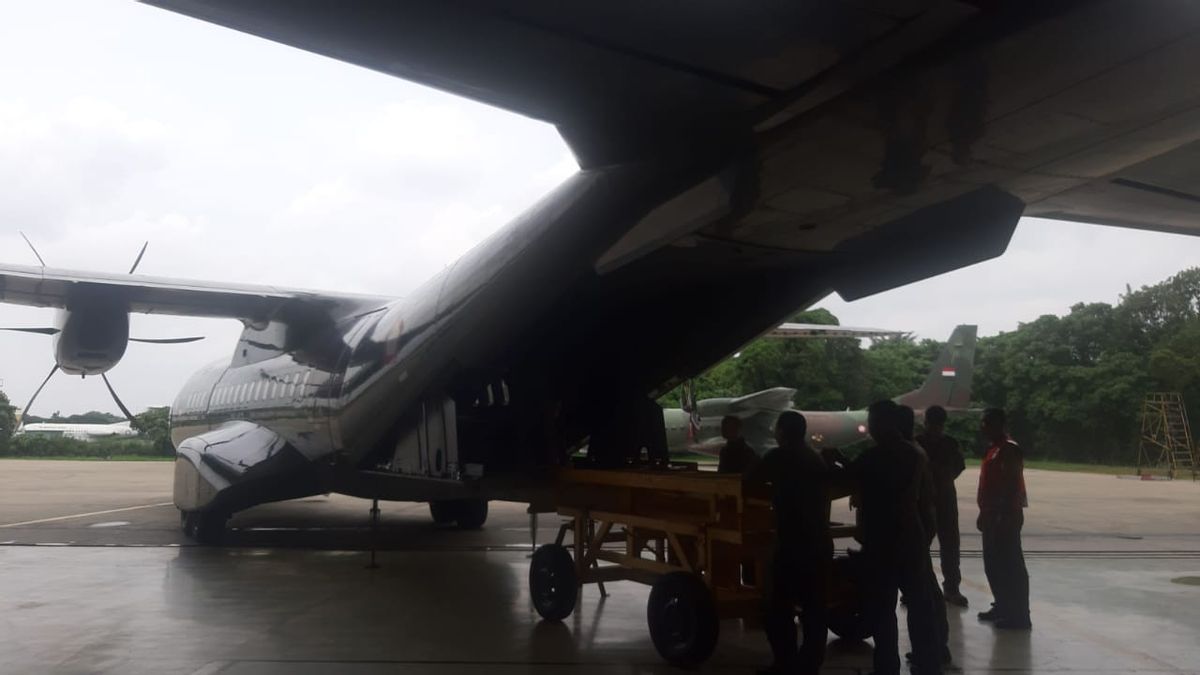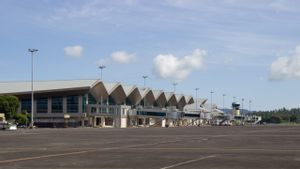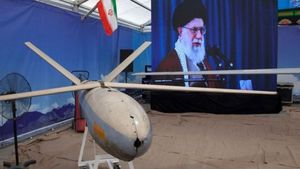
JAKARTA - The year 2020 begins with a large-scale flood disaster. Jakarta, Tangerang and Bekasi were submerged in water. Even so, the potential for more severe flooding can occur throughout this rainy season. The Agency for the Assessment and Application of Technology (BPPT) intervened. Some time ago, we flew with them, seeing first hand the weather modification process.
Last Friday, January 3, we rushed to catch a flight at Squadron 2 at Halim Perdanakusuma Air Base, East Jakarta. Not commercial flights to tourist-filled cities. Our flight destination is the cumulonimbus cloud. There, we will sow tens of tons of hygroscopic substances such as table salt (NaCI) and CaCI2 in cloud seeds that reveal the potential for rain.
This weather modification technique is carried out to stimulate earlier rain before it reaches mainland Jakarta. Understandably, that day, Jakarta and its surroundings were still shrouded in a paranoid atmosphere about flooding. There are two scheduled flights that day. At 09.00 WIB and 14.00 WIB. We're on the second flight. During the day, when the sky was filled with dark clouds. Our feelings falter, of course.
"Sure, really want to come? Wow, on top of that it feels like riding a vehicle, because we want to go to the cloud. Get into the cloud, but safe. We get on the CN295 plane," said an aviator in a briefing we attended shortly before flying. If it's a welcome, then it's a very unpleasant greeting for us.
Shocks at 10 thousand feet

[Click to Taste]
The CN295 engine that was going to take us into the air finally started. Apart from CN295, the Indonesian Air Force (AU) also lowered a Casa plane that would fly after us. Like the CN295 we boarded, the crew on the Casa plane also carried the same mission: sowing salt in the airspace of Jakarta and its surrounding waters.
At 14.50 WIB, we boarded the plane that was ready on the runway. The roar of the aircraft sounded loud in our ears. The crew on the runway communicate with each other by means of sign language. Entering the hull of the plane, we squeezed into a large tube-shaped device that became a container and spreader of salt. In the steering cabin, the pilot starts to increase the speed. We know, we're taking off soon.

The plane took off smoothly. Even smoother than the average commercial airplane takeoff we've experienced. However, everything changed when we reached an altitude of 10 thousand feet above sea level. The weather we watched through the window gap was still the same: cloudy. Worries regained control of us.
At that altitude, the aircraft performs a lot of maneuver to find the right cloud seeds for sowing salt. The swaying left and right puffed out the contents of our heads and stomachs. We felt dizzy and nauseous. In the midst of these conditions, the Indonesian Air Force crews continued to work as if they were on a calm sea. They are immovable.
At certain points, a crew seated in the tail of the plane gave the cue to turn the rudder on the salt engine carrier. The cue was followed by other crews who immediately hit the salt reservoir. The tubes are hit with a rubber coated hammer which aims to reduce the impact damage from the blows.
The blows themselves are important to ensure the salt flows smoothly through a pipe in the tube. The hitting was not just any hit. Accuracy is very important in this work. The coordination between the salt sprinklers crew, the seed monitoring crew, and the cockpit - which was filled by Captatin pnb Gilang P Pranajaya and the BPPT scientist who acted as co-pilot - had to be well established.

We flew for nearly three hours anxiously. It is nothing. If on normal flights we minimize turbulence by avoiding rain clouds such as cumulonimbus, in this flight we make the cumulonimbus cloud the destination we must penetrate. Because, from the clouds, the biggest potential for rain to fall.
The matter of dizziness and nausea is extraordinary, we are not the only ones who experience it. A media crew who sat on the floor with us also looked pale due to nausea and dizziness. The incredible shaking in the cumulonimbus clouds was more of an extreme game ride as an aviator described before we took off.
Salt seeding technique
After the salt finished sowing, we returned to Halim Perdanakusuma Air Base. We arrived around 17.30 WIB with a trace of nausea. We don't even know where we flew. Above, we found only the clouds as our scene. The pilot of the aircraft, Captain Gilang, explained that the flight was carried out around the Sunda Strait area. Seedlings consume 2.4 tons of salt.

"We sowed 2.4 tons of seedling material consisting of eight consoles put on the plane. Then, carried out a flight to the Sunda Strait area and sowed the clouds around the Sunda Strait, the goal is to make the clouds rain immediately before arriving in the region. Jabodetabek. Thus, flooding will be avoided or minimize the risk of flooding that will occur, "said Gilang.
Gilang explained that seeding was not done sporadically. According to him, to determine which cloud to sow salt, he uses a weather radar that is already installed on his plane.
"When conducting flights, the potential for clouds that we can see is using a weather radar installed on the plane. Then, if it is still during the day it can also be seen visually, we can do it visually. Can identify various types of clouds, which have the potential for rain. , like CB or cumulonimbus clouds, "he added.

Furthermore, Gilang explained the challenges faced during the flight. As we explained earlier, that this flight is very different from commercial airlines in general. Cloud problems that are usually avoided. During this flight, the plane was instead herded toward the clouds.
"Compared to ordinary flights is the level of turbulence, the level of shock is greater than ordinary flights. Because ordinary flights (planes) avoid clouds, in this flight, we come to the cloud," he concluded.
The English, Chinese, Japanese, Arabic, and French versions are automatically generated by the AI. So there may still be inaccuracies in translating, please always see Indonesian as our main language. (system supported by DigitalSiber.id)












